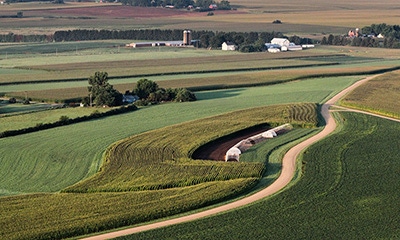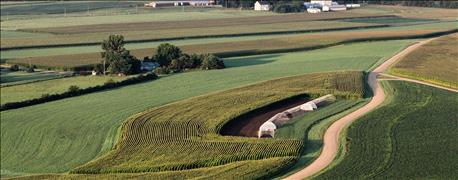
The July Class III price was $16.33 and may be near $16.40 for August. However, weaker nonfat dry milk prices may lower the August Class IV price to around $12.85 compared to $13.15 in July, according to Bob Cropp, University of Wisconsin-Madison dairy economist.
"Restaurant and food service demand remains strong for cheese and butter supporting prices despite much weaker exports," Cropp says.

According to Cropp, dairy exports will not offer much support for higher dairy product prices or milk prices until perhaps the second half of 2016.
June cheese exports were 22% lower than a year ago and butter exports were 75% lower. But, cheese prices will average a little higher in August than July, Cropp predicts. On the CME cheddar barrels averaged $1.6313 per pound for July, were a high of $1.7325 early August and are now $1.66. The 40-pound cheddar block price averaged $1.6659 per pound for July, was $1.7625 in early August and was $1.69 the end of August.
Butter prices were also higher in August than July. Butter averaged $1.9056 per pound for July and was 2.27 the end of August.
But, lower nonfat dry milk prices earlier in the month more than offset higher butter prices lowering the Class IV price. Nonfat dry milk averaged $0.7622 per pound for July, was a low of $0.69 early August but has increased to $0.7675.
"Since about half of nonfat dry milk production is exported nonfat dry milk prices are heavily dependent on exports," he says. Nonfat dry exports in June were 23% lower than a year ago.
The question is how long will cheese and butter prices hold at these levels?
Three factors will support prices, according to Cropp. One is declining milk production and milk composition seasonally during the hot summer months. Second, buyers of butter and cheese will be placing orders and building inventory for the holiday season. And third, with schools now open, fluid milk sales will be increasing.
~~~PAGE_BREAK_HERE~~~
"But, dairy product production has been higher than a year ago and stocks are building," Cropp says. June dairy product production shows butter production 1.7% higher than a year ago, nonfat dry milk production 10.6% higher, cheddar cheese production up 4.3% r and total cheese production 1.5% higher. July 1 stocks show butter 27.8% higher than a year ago and 10.8% higher than the five-year average for this date.
Natural cheese stocks were 4.5% higher than the five-year average. Total cheese stocks were 8.1% higher higher than the five-year average for this date. Manufacture stocks of nonfat dry milk were not only 15.2% higher than a year ago, but also a record high.
According to Cropp, dairy exports will not offer much support for higher dairy product prices or milk prices until perhaps the second half of 2016. June exports declined for the fourth straight month. On a total solids basis exports were equivalent to 14.6% of total milk production compared to 15.4% last year. World prices are well below U.S. prices making export challenging.
According to U.S. Dairy Export Council world market prices for skim milk powder and whole milk powder are the lowest in more than a decade, about half of what they were a year ago. Cheese, butter and whey prices are at a six year low, down 25% to 45% from last year.
Without large imports from the two largest importers, China and Russia, it will take a greater and lengthier contraction in world milk production to clear the existing overhanging supply of dairy products, Cropp says. "With increased supply from Europe and Oceania U.S. exporters face very aggressive competition for markets"
Higher U.S. prices are attracting more imports. Imports were equivalent to 3.8% of U.S. milk production in June, the highest of the year.
~~~PAGE_BREAK_HERE~~~
So where milk prices are headed over the remainder of this year and into 2016 will depend heavily upon the level of milk production, Cropp says. Compared to a year ago, June milk production was up 0.9% and July up 1.2%. For the year-to-date production is up 1.6%. The July increase was due to 0.6% more cows than a year ago and 0.6% more milk per cow. Milk production in the West remains soft with Arizona and Idaho's production up just 2.4% and 0.7% respectively and production down 3.3% for California. Milk production remains strong in the Northeast and Upper Midwest. In the Northeast production was up 3.2% in New York, 2.3% in Pennsylvania and 6.3% in Michigan. In the Upper Midwest, production was up 3.6% in Iowa, 4.2% in Minnesota, 12.3% in South Dakota and 5.3% in Wisconsin.
"If milk production continues to increase by more than 1%, which is expected, dairy product prices and milk prices will likely show some weakness, especially once butter and cheese buyers fill their orders for the holiday season. Prices could hold for another month or two before showing some softness," Cropp says.
Milk futures market remains rather optimistic. Class III futures are actually showing some strengthening for the next few months with prices peaking at $16.90 in October and declining to $16.25 by December. Class III futures are lower in 2016 with $15s for the January through June period.
About the Author(s)
You May Also Like






